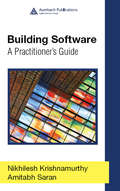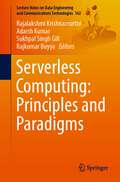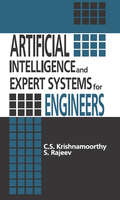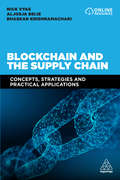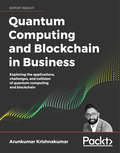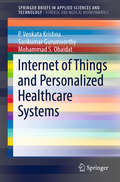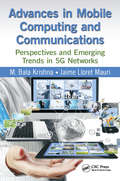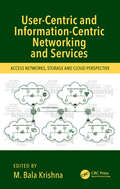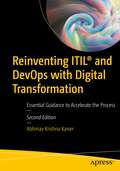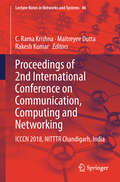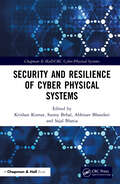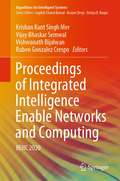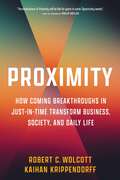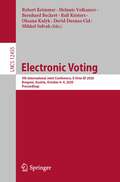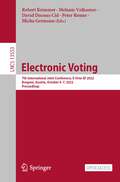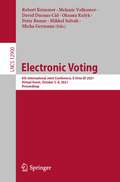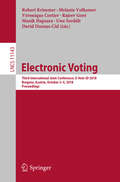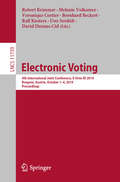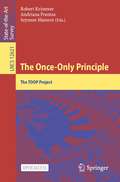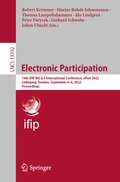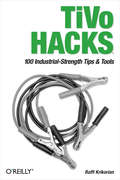- Table View
- List View
Building Software: A Practitioner's Guide
by Nikhilesh Krishnamurthy Amitabh SaranProviding a framework to guide software professionals through the many aspects of development, Building Software: A Practitioner's Guide shows how to master systems development and manage many of the soft and technical skills that are crucial to the successful delivery of systems and software. It encourages tapping into a wealth of cross-domain and legacy solutions to overcome common problems, such as confusion about requirements and issues of quality, schedule, communication, and people management. The book offers insight into the inner workings of software reliability along with sound advice on ensuring that it meets customer and organizational needs.
Serverless Computing: Principles and Paradigms (Lecture Notes on Data Engineering and Communications Technologies #162)
by Rajalakshmi Krishnamurthi Adarsh Kumar Sukhpal Singh Gill Rajkumar BuyyaThis book explores how advances in graphic processing units (GPUs), programmable logic devices (TPUs), and field-programmable gate arrays have altered the serverless computing landscape (FPGAs). Distributed system architectures and implementations have undergone significant changes due to the popularity of serverless computing. Making and releasing product applications, doing market research, and maintaining customer interactions might all benefit from the reduced infrastructure expenses made possible by serverless computing. This book is a great resource for teachers and students interested in learning more about serverless computing. Some of the main questions surrounding serverless technology, such as scalability and performance distribution, are answered. Concepts and fundamentals of computing performance such as cost-free operation, good time and resource management, fairness, and interoperability are discussed. Serverless is at the forefront of this shift, which has made data-intensive, distributed applications, and open-source platforms essential for any modern computer to function. Data-centric queuing, real-time logging and monitoring, querying, and alarms are all examples of serverless services.
Artificial Intelligence and Expert Systems for Engineers (New Directions in Civil Engineering #11)
by C. S. Krishnamoorthy S. RajeevThis book provides a comprehensive presentation of artificial intelligence (AI) methodologies and tools valuable for solving a wide spectrum of engineering problems. What's more, it offers these AI tools on an accompanying disk with easy-to-use software. Artificial Intelligence and Expert Systems for Engineers details the AI-based methodologies known as: Knowledge-Based Expert Systems (KBES); Design Synthesis; Design Critiquing; and Case-Based Reasoning. KBES are the most popular AI-based tools and have been successfully applied to planning, diagnosis, classification, monitoring, and design problems. Case studies are provided with problems in engineering design for better understanding of the problem-solving models using the four methodologies in an integrated software environment. Throughout the book, examples are given so that students and engineers can acquire skills in the use of AI-based methodologies for application to practical problems ranging from diagnosis to planning, design, and construction and manufacturing in various disciplines of engineering.Artificial Intelligence and Expert Systems for Engineers is a must-have reference for students, teachers, research scholars, and professionals working in the area of civil engineering design in particular and engineering design in general.
Blockchain and the Supply Chain: Concepts, Strategies and Practical Applications
by Bhaskar Krishnamachari Nick Vyas Aljosja BeijeBlockchain can transform companies, if it is successfully integrated into existing supply chain ecosystems and practices. Some of the key benefits are dispute resolution, foolproof track and trace, event management, operational as well as financial transparency, speed to market, visibility, elimination of heavy reliance on intermediary, integration of IoT technology, machine learning, and artificial intelligence. Blockchain and the Supply Chain highlights how blockchain can enable opportunities within the end-to-end supply chain.The team of authors look at the evolution of the network, systems and finance, as well as basics of blockchain such as peer-to-peer transactions, consensus based algorithms and smart contracts. They include cases which highlight the opportunities within the different nodes of systems, sales and operations planning and provide practical examples from specific supply chains, such as the movement of temperature controlled goods, dry goods and precious commodities, as well as general cargo flow. Blockchain and the Supply Chain examines the business case for blockchain, including increased efficiency of transactions. It also covers the broader set of technologies relevant to supply chain, such as IoT, Big Data and Cyber Security basics and the capabilities they offer.
Quantum Computing and Blockchain in Business: Exploring the applications, challenges, and collision of quantum computing and blockchain
by Arunkumar KrishnakumarFintech veteran and venture capitalist, Arunkumar Krishnakumar, cuts through the hype to bring us a first-hand look into how quantum computing and Blockchain together could redefine industries and life as we know it. Key Features Take a practical perspective on quantum computing and Blockchain technologies and their impacts on key industries Gain insights from experts who are applying quantum computing or Blockchain in their fields See where quantum computing and Blockchain are heading, and where the two may intersect Book Description Are quantum computing and Blockchain on a collision course or will they be the most important trends of this decade to disrupt industries and life as we know it? Fintech veteran and venture capitalist Arunkumar Krishnakumar cuts through the hype to bring us a first-hand look into how quantum computing and Blockchain together are redefining industries, including fintech, healthcare, and research. Through a series of interviews with domain experts, he also explores these technologies' potential to transform national and global governance and policies – from how elections are conducted and how smart cities can be designed and optimized for the environment, to what cyberwarfare enabled by quantum cryptography might look like. In doing so, he also highlights challenges that these technologies have to overcome to go mainstream. Quantum Computing and Blockchain in Business explores the potential changes that quantum computing and Blockchain might bring about in the real world. After expanding on the key concepts and techniques, such as applied cryptography, qubits, and digital annealing, that underpin quantum computing and Blockchain, the book dives into how major industries will be impacted by these technologies. Lastly, we consider how the two technologies may come together in a complimentary way. What you will learn Understand the fundamentals of quantum computing and Blockchain Gain insights from the experts who are using quantum computing and Blockchain Discover the implications of these technologies for governance and healthcare Learn how Blockchain and quantum computing may influence logistics and finance Understand how these technologies are impacting research in areas such as chemistry Find out how these technologies may help the environment and influence smart city development Understand the implications for cybersecurity as these technologies evolve Who this book is for This book is for tech enthusiasts – developers, architects, managers, consultants, and venture capitalists – working in or interested in the latest developments in quantum computing and blockchain. While the book introduces key ideas, terms, and techniques used in these technologies, the main goal of this book is to prime readers for the practical adoption and applications of these technologies across varies industries and walks of life.
Internet of Things and Personalized Healthcare Systems (SpringerBriefs in Applied Sciences and Technology)
by P. Venkata Krishna Sasikumar Gurumoorthy Mohammad S. ObaidatThis book highlights the issues and challenges in personalised healthcare systems. The individual chapters address different aspects of such systems, including the novel Internet of Things (IoT) system architectures in healthcare and emerging e-health based IoT applications. Moreover, the book investigates the impact of cutting-edge innovations on the IoT.
Object Oriented Programming Through Java
by P. Radha KrishnaUsing Java to advantage depends on learning its object oriented, platform independent, security concerned and graphic intensive features effectively. The explanations, programs, points and style of writing are to convey the power of the language.
Advances in Mobile Computing and Communications: Perspectives and Emerging Trends in 5G Networks
by M. Bala Krishna Jaime Lloret MauriBy 2020, if not before, mobile computing and wireless systems are expected to enter the fifth generation (5G), which promises evolutionary if not revolutionary services. What those advanced services will look like, sound like, and feel like is the theme of the book Advances in Mobile Computing and Communications: Perspectives and Emerging Trends in 5G Networks. The book explores futuristic and compelling ideas in latest developments of communication and networking aspects of 5G. As such, it serves as an excellent guide for advanced developers, communication network scientists, researchers, academicians, and graduate students. The authors address computing models, communication architecture, and protocols based on 3G, LTE, LTE-A, 4G, and beyond. Topics include advances in 4G, radio propagation and channel modeling aspects of 4G networks, limited feedback for 4G, and game theory application for power control and subcarrier allocation in OFDMA cellular networks. Additionally, the book covers millimeter-wave technology for 5G networks, multicellular heterogeneous networks, and energy-efficient mobile wireless network operations for 4G and beyond using HetNets. Finally, the authors delve into opportunistic multiconnect networks with P2P WiFi and cellular providers and video streaming over wireless channels for 4G and beyond.
User-Centric and Information-Centric Networking and Services: Access Networks, Storage and Cloud Perspective
by M. Bala KrishnaUser-Centric Networks (UCN) and Information-Centric Networks (ICN) are new communication paradigms to increase the efficiency of content delivery and also content availability. In this new concept, the network infrastructure actively contributes to content caching and distribution. This book presents the basic concepts of UCN and ICN, describes the main architecture proposals for these networks, and discusses the main challenges to their development. The book also looks at the current challenges for this concept, including naming, routing and caching on the network-core elements, several aspects of content security, user privacy, and practical issues in implementing UCN and ICN.
Reinventing ITIL® and DevOps with Digital Transformation: Essential Guidance to Accelerate the Process
by Abhinav Krishna KaiserThe second edition of this book has been fully updated to show how the DevOps way of working has continued to adapt to changing technologies. The ITIL processes which were an integral part of the DevOps world have been merged with the DevOps framework, reflecting the current emphasis on product models rather than viewing project and support models separately. This book starts with the basics of digital transformation before exploring how this works in practice: that is, people, processes and technology, and org structures. It delves into value streams that are the basis for ITIL and DevOps, highlighting the differences between the methods of the past and new methodologies needed to ensure products to meet contemporary expectations. This updated edition includes new chapters that discuss digital transformation for business success, introduce the battle tank framework, leading people in the digital world, managing work in a remote working model, and the product-led transformation model. These new chapters provide the guidance necessary to move beyond DevOps into a holistic digital transformation exercise.The ideas, recommendations, and solutions you'll learn over the course of this book can be applied to develop solutions or create proposals for clients, and to deliver seamless services for DevOps projects.What You Will LearnUnderstand digital transformationLeverage the battle tank framework for digital transformationGain insight into the confluence of DevOps and ITILAdapt ITIL processes in DevOps projectsMove organizations from a project to a product-led model Lead teams in a digital worldManage the work of remote teamsWho This Book Is ForIT consultants and IT professionals who are looking for guidance to strategize, plan and implement digital transformation initiatives; design and redesign ITIL processes to adapt to the digital ways of working; moving organizations to product-led business; and leading people and managing work in the digital age.
The Best Interface Is No Interface: The Simple Path to Brilliant Technology
by Golden KrishnaOur love affair with the digital interface is out of control. We've embraced it in the boardroom, the bedroom, and the bathroom. Screens have taken over our lives. Most people spend over eight hours a day staring at a screen, and some "technological innovators" are hoping to grab even more of your eyeball time. You have screens in your pocket, in your car, on your appliances, and maybe even on your face. Average smartphone users check their phones 150 times a day, responding to the addictive buzz of Facebook or emails or Twitter. Are you sick? There's an app for that! Need to pray? There's an app for that! Dead? Well, there's an app for that, too! And most apps are intentionally addictive distractions that end up taking our attention away from things like family, friends, sleep, and oncoming traffic. There's a better way. In this book, innovator Golden Krishna challenges our world of nagging, screen-based bondage, and shows how we can build a technologically advanced world without digital interfaces. In his insightful, raw, and often hilarious criticism, Golden reveals fascinating ways to think beyond screens using three principles that lead to more meaningful innovation. Whether you're working in technology, or just wary of a gadget-filled future, you'll be enlighted and entertained while discovering that the best interface is no interface.
Proceedings of 2nd International Conference on Communication, Computing and Networking: ICCCN 2018, NITTTR Chandigarh, India (Lecture Notes in Networks and Systems #46)
by C. Rama Krishna Maitreyee Dutta Rakesh KumarThe book provides insights from the 2nd International Conference on Communication, Computing and Networking organized by the Department of Computer Science and Engineering, National Institute of Technical Teachers Training and Research, Chandigarh, India on March 29–30, 2018. The book includes contributions in which researchers, engineers, and academicians as well as industrial professionals from around the globe presented their research findings and development activities in the field of Computing Technologies, Wireless Networks, Information Security, Image Processing and Data Science. The book provides opportunities for the readers to explore the literature, identify gaps in the existing works and propose new ideas for research.
Security and Resilience of Cyber Physical Systems (Chapman & Hall/CRC Cyber-Physical Systems)
by Krishan Kumar, Sunny Behal, Abhinav Bhandari and Sajal BhatiaIn this era of 5G digital communication, the implementation of industry 4.0 is the need of the hour. The main aim of this industrial revolution is to completely automate the industry for better productivity, correct decision making and increased efficiency. All the concepts of industry 4.0 can only be implemented with the help of Cyber Physical System aka CPS. This is a smart system in which complete mechanism is monitored and controlled by computer-based algorithms. Confidentiality, Integrity and Availability are the three major concern for providing the add on security to any organization or a system. It has become a biggest challenge among the security professionals to secure these cyber physical systems. Hackers and bad guys are planning various kinds of attacks on daily basis on these systems. This book addresses the various security and privacy issues involved in the cyber physical system. There is need to explore the interdisciplinary analysis to ensure the resilience of these systems including different types of cyber threats to these systems. The book highlights the importance of security in preventing, detecting, characterizing and mitigating different types of cyber threats on CPS. The book offers a simple to understand various organized chapters related to the CPS and their security for graduate students, faculty, research scholars and industry professionals. The book offers comprehensive coverage of the most essential topics, including: Cyber Physical Systems and Industrial Internet of Things (IIoT) Role of Internet of Things and their security issues in Cyber Physical Systems. Role of Big data analytic to develop real time solution for CPS. DDoS attacks and their solutions in CPS. Emulator Mininet for simulating CPS Spark-based DDoS Classification System for Cyber-Physical Systems
Proceedings of Integrated Intelligence Enable Networks and Computing: IIENC 2020 (Algorithms for Intelligent Systems)
by Krishan Kant Singh Mer Vijay Bhaskar Semwal Vishwanath Bijalwan Rubén González CrespoThis book presents best selected research papers presented at the First International Conference on Integrated Intelligence Enable Networks and Computing (IIENC 2020), held from May 25 to May 27, 2020, at the Institute of Technology, Gopeshwar, India (Government Institute of Uttarakhand Government and affiliated to Uttarakhand Technical University). The book includes papers in the field of intelligent computing. The book covers the areas of machine learning and robotics, signal processing and Internet of things, big data and renewable energy sources.
Proximity: How Coming Breakthroughs in Just-in-Time Transform Business, Society, and Daily Life
by Kaihan Krippendorff Robert C. WolcottWhat if you could have whatever you want, produced and provided immediately and affordably no matter how customized—with minimal environmental impact? Products, services, and experiences on demand. Just-in-time anything, anywhere, anytime. This radical change is underway, as digital technologies push the production and provision of value ever closer to the moment of demand.Robert C. Wolcott and Kaihan Krippendorff provide an indispensable guide to the Proximity revolution, showing how it’s transforming every industry—and our lives. Offering unparalleled foresight for leaders and innovators, they reveal how pervasive this trend will be. Proximity represents an entirely new way to serve customers, with critical implications for corporate strategy, investing, public policy, supply chain resilience, and sustainability. Incremental changes to existing business models won’t suffice.Through interviews and compelling examples, Proximity shares stories of the people and companies leading the way. The book places rapidly advancing technologies—from generative AI and 3D printing to lab-grown meats, renewable energy, and virtual reality—in context and explores the factors accelerating the transformation.Proximity offers a playbook for business leaders, investors, and entrepreneurs to win this rapidly emerging game—and for each of us to consider the implications for our careers, families, communities, and lives.
Electronic Voting: 5th International Joint Conference, E-Vote-ID 2020, Bregenz, Austria, October 6–9, 2020, Proceedings (Lecture Notes in Computer Science #12455)
by Robert Krimmer Melanie Volkamer Ralf Küsters David Duenas-Cid Bernhard Beckert Oksana Kulyk Mikhel SolvakThis book constitutes the proceedings of the 5th International Conference on Electronic Voting, E-Vote-ID 2020, held online -due to COVID -19- in Bregenz, Austria, in October 2020. The 14 full papers presented were carefully reviewed and selected from 55 submissions.The conference collected the most relevant debates on the development of Electronic Voting, from aspects relating to security and usability through to practical experiences and applications of voting systems, also including legal, social or political aspects, amongst others; turning out to be an important global referent in relation to this issue.
Electronic Voting: 7th International Joint Conference, E-Vote-ID 2022, Bregenz, Austria, October 4–7, 2022, Proceedings (Lecture Notes in Computer Science #13553)
by Robert Krimmer Melanie Volkamer David Duenas-Cid Peter Rønne Micha GermannThis open access book LNCS 13353 constitutes the proceedings of the 7th International Conference on Electronic Voting, E-Vote-ID 2022, held in Bregenz, Austria, in October 2022. The 10 full papers presented were carefully reviewed and selected from 39 submissions. The conference collected the most relevant debates on the development of Electronic Voting, from aspects relating to security and usability through to practical experiences and applications of voting systems, also including legal, social, or political aspects, amongst others.
Electronic Voting: 6th International Joint Conference, E-Vote-ID 2021, Virtual Event, October 5–8, 2021, Proceedings (Lecture Notes in Computer Science #12900)
by Robert Krimmer Melanie Volkamer David Duenas-Cid Oksana Kulyk Peter Rønne Mihkel Solvak Micha GermannThis book constitutes the proceedings of the 6th International Conference on Electronic Voting, E-Vote-ID 2021, held online -due to COVID -19- in Bregenz, Austria, in October 2021. The 14 full papers presented were carefully reviewed and selected from 55 submissions. The conference collected the most relevant debates on the development of Electronic Voting, from aspects relating to security and usability through to practical experiences and applications of voting systems, as well as legal, social or political aspects.
Electronic Voting: Third International Joint Conference, E-Vote-ID 2018, Bregenz, Austria, October 2-5, 2018, Proceedings (Lecture Notes in Computer Science #11143)
by Robert Krimmer Melanie Volkamer Véronique Cortier Rajeev Goré Manik Hapsara Uwe Serdült David Duenas-CidThis book constitutes the refereed proceedings of the Third International Joint Conference on Electronic Voting, E-Vote-ID 2018, held in Bregenz, Austria, in October 2018. The 13 full papers presented in this volume were carefully reviewed and selected from 45 submissions. The papers deal with topics connected with electronic voting including experiences and revisions of the real uses of E-voting systems and corresponding processes in elections.
Electronic Voting: 4th International Joint Conference, E-Vote-ID 2019, Bregenz, Austria, October 1–4, 2019, Proceedings (Lecture Notes in Computer Science #11759)
by Robert Krimmer Melanie Volkamer Veronique Cortier Bernhard Beckert Ralf Küsters Uwe Serdült David Duenas-CidThis book constitutes the proceedings of the 4th International Conference on Electronic Voting, E-Vote-ID 2019, held in Bregenz, Austria, in October 2019. The 13 revised full papers presented were carefully reviewed and selected from 45 submissions. The conference was organized in tracks on security, usability and technical issues, administrative, legal, political and social issues, elections and practical experiences, posters and e-voting system demo.
The Once-Only Principle: The TOOP Project (Lecture Notes in Computer Science #12621)
by Robert Krimmer Andriana Prentza Szymon MamrotThis open access State-of-the-Art Survey describes and documents the developments and results of the Once-Only Principle Project (TOOP). The Once-Only Principle (OOP) is part of the seven underlying principles of the eGovernment Action Plan 2016-2020. It aims to make the government more effective and to reduce administrative burdens by asking citizens and companies to provide certain standard information to the public authorities only once.The project was horizontal and policy-driven with the aim of showing that the implementation of OOP in a cross-border and cross-sector setting is feasible. The book summarizes the results of the project from policy, organizational, architectural, and technical points of view.
Electronic Participation: 12th Ifip Wg 8. 5 International Conference, Epart 2020, Linköping, Sweden, August 31 - September 2, 2020, Proceedings (Lecture Notes In Computer Science Series #12220)
by Robert Krimmer Marius Rohde Johannessen Thomas Lampoltshammer Ida Lindgren Peter Parycek Gerhard Schwabe Jolien Ubacht<p>This book constitutes the proceedings of the 14th IFIP WG 8.5 International Conference on Electronic Participation, ePart 2022, held in Linköping, Sweden, during September 6–8, 2022, in conjunction with IFIP WG 8.5 Electronic Government (EGOV 2022), and the Conference for E-Democracy and Open Government Conference (CeDEM 2022).<p> <p>The 12 full papers presented were carefully reviewed and selected from 26 submissions. The papers are clustered under the following topical sections: E-democracy and e-participation; ICT & sustainability; digital and social media; legal informatics; and digital society.<p>
Electronic Participation: 14th IFIP WG 8.5 International Conference, ePart 2022, Linköping, Sweden, September 6–8, 2022, Proceedings (Lecture Notes in Computer Science #13392)
by Robert Krimmer Marius Rohde Johannessen Thomas Lampoltshammer Ida Lindgren Peter Parycek Gerhard Schwabe Jolien UbachtThis book constitutes the proceedings of the 14th IFIP WG 8.5 International Conference on Electronic Participation, ePart 2022, held in Linköping, Sweden, during September 6–8, 2022, in conjunction with IFIP WG 8.5 Electronic Government (EGOV 2022), and the Conference for E-Democracy and Open Government Conference (CeDEM 2022). The 12 full papers presented were carefully reviewed and selected from 26 submissions. The papers are clustered under the following topical sections: E-democracy and e-participation; ICT & sustainability; digital and social media; legal informatics; and digital society.
Geometric Methods in Signal and Image Analysis
by Hamid Krim A. Ben HamzaThis comprehensive guide offers a new approach for developing and implementing robust computational methodologies that uncover the key geometric and topological information from signals and images. With the help of detailed real-world examples and applications, readers will learn how to solve complex signal and image processing problems in fields ranging from remote sensing to medical imaging, bioinformatics, robotics, security, and defence. With an emphasis on intuitive and application-driven arguments, this text covers not only a range of methods in use today, but also introduces promising new developments for the future, bringing the reader up-to-date with the state of the art in signal and image analysis. Covering basic principles as well as advanced concepts and applications, and with examples and homework exercises, this is an invaluable resource for graduate students, researchers, and industry practitioners in a range of fields including signal and image processing, biomedical engineering, and computer graphics.
TiVo Hacks
by Raffi KrikorianTiVo Hacks helps you get the most out of your TiVo personal video recorder. Armed with just a screwdriver and basic understanding of PC hardware (or willingness to learn), preeminent hackability awaits. This book includes hacks for changing the order of recorded programs, activating the 30-second skip to blaze through commercials, upgrading TiVo's hard drive for more hours of recording, use of TiVo's Home Media Option to remotely schedule a recording via the Web, log in to the serial port for command-line access to programming data, log files, closed-captioning data, display graphics on the TiVo screen, and even play MP3s. Readers who use advanced hacks to put TiVo on their home network via the serial port, Ethernet, USB, or wireless (with 802.11b WiFi) will watch a whole new world open up. By installing various open source software packages, you can use TiVo for mail, instant messaging, caller-ID, and more. It's also easy to run a web server on TiVo to schedule recordings, access lists of recorded shows, and even display them on a web site. While TiVo gives viewers personalized control of their TVs, TiVo Hacks gives users personalized control of TiVo. Note: Not all TiVos are the same. The original TiVo, the Series 1, is the most hackable TiVo out there; it's a box thrown together with commodity parts and the TiVo code is running on open hardware. The Series 2 TiVo, the most commonly sold TiVo today, is not open. You won't see hacks in this book that involve modifying Series 2 software.
